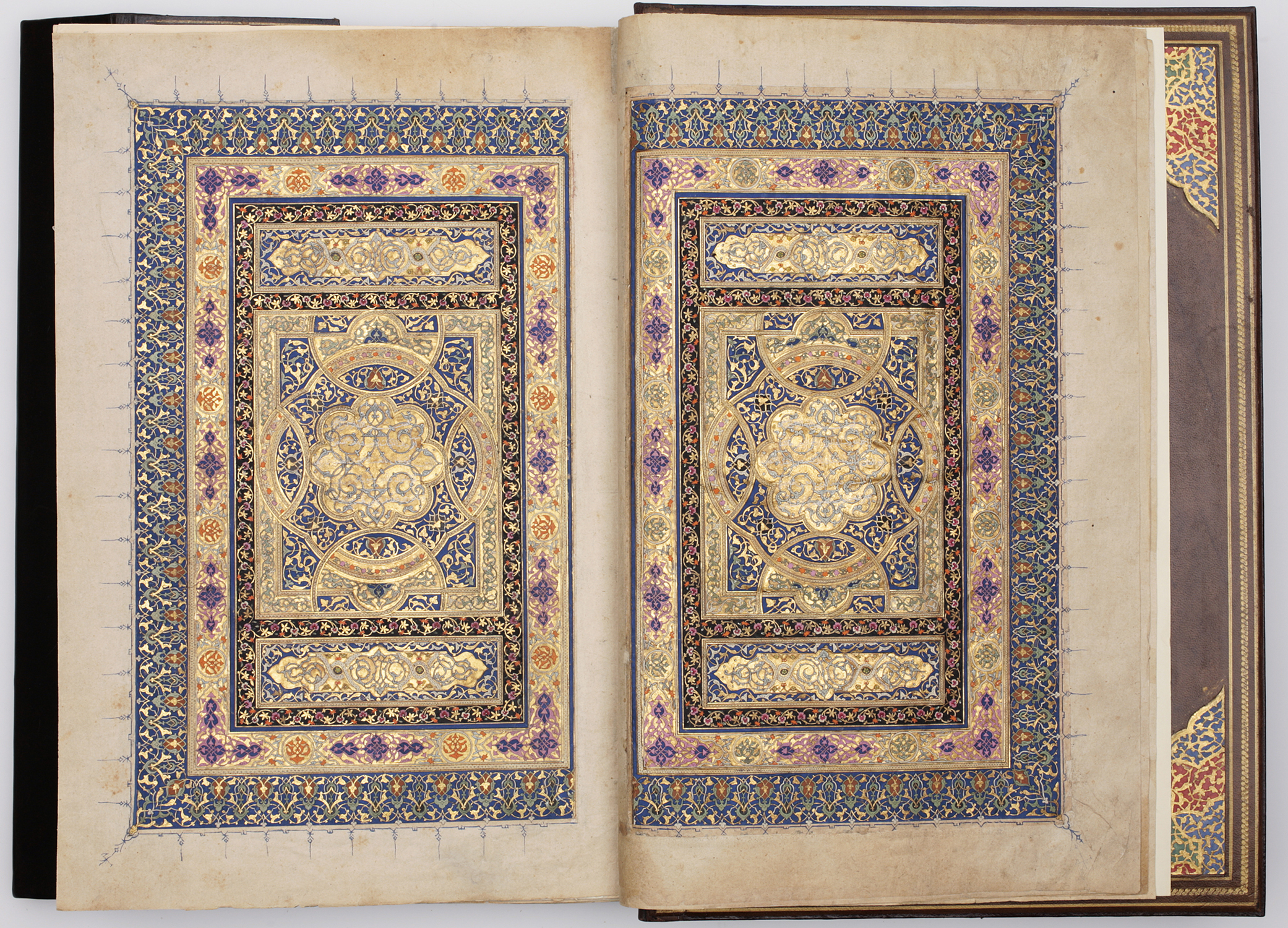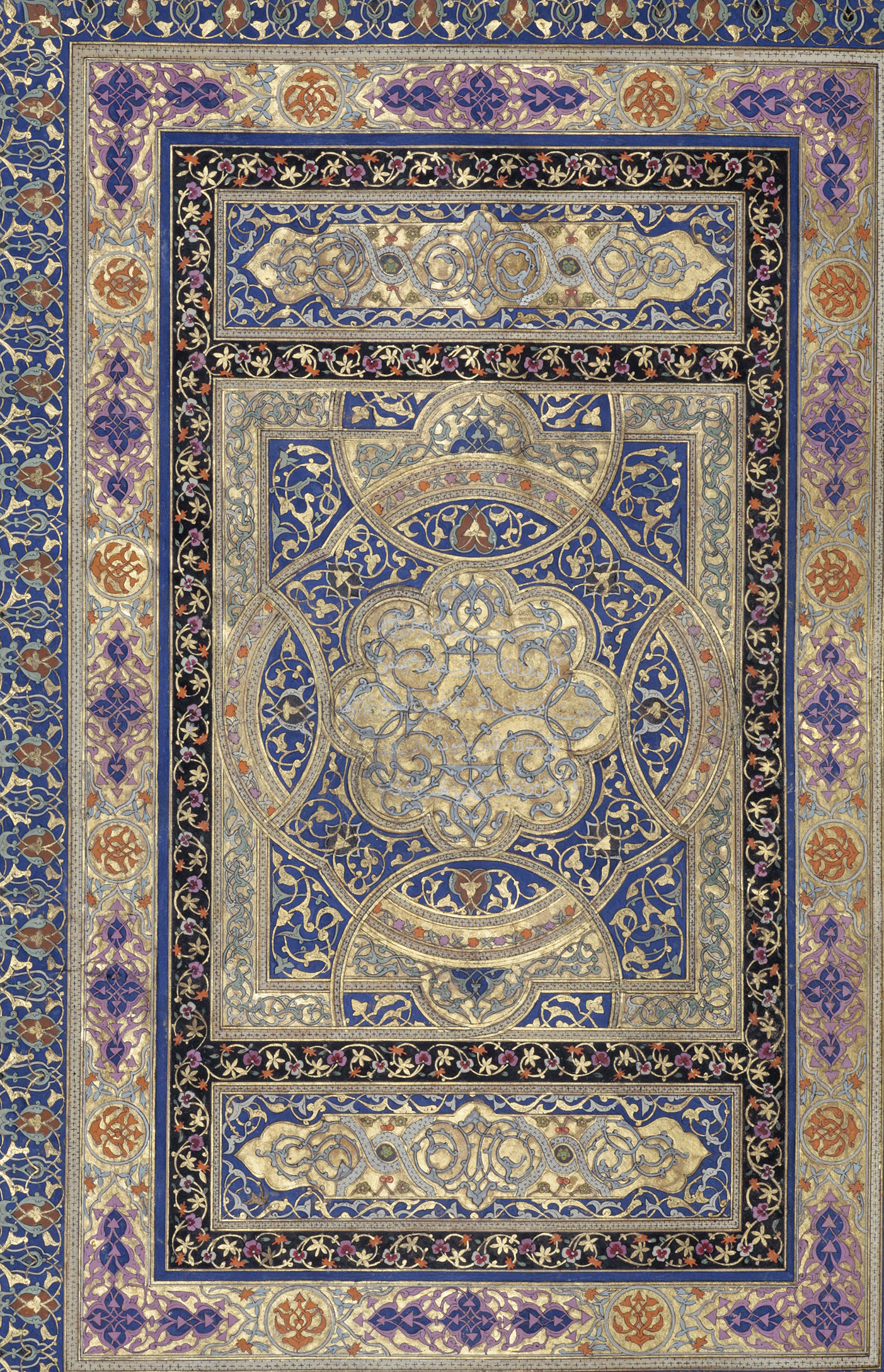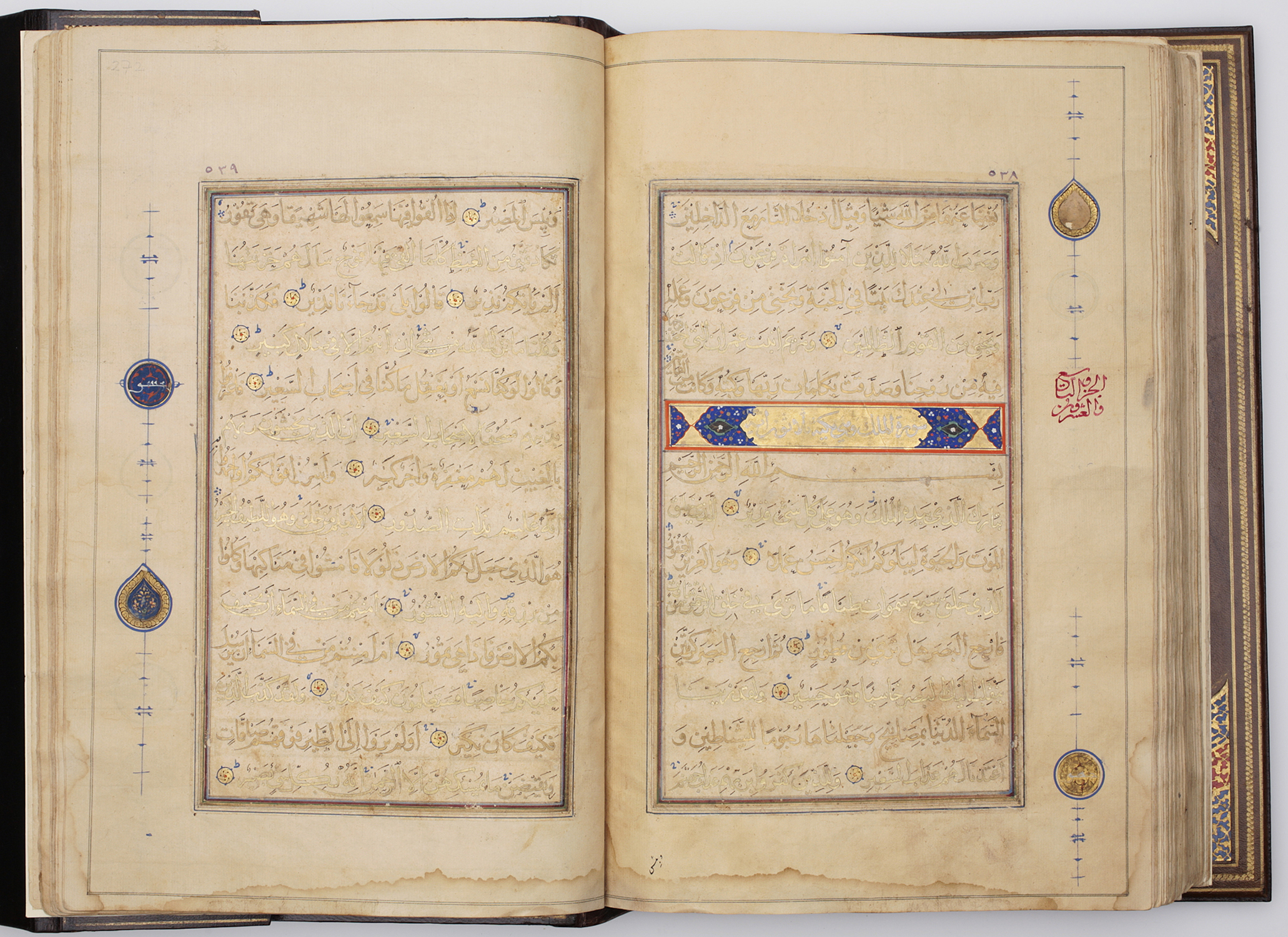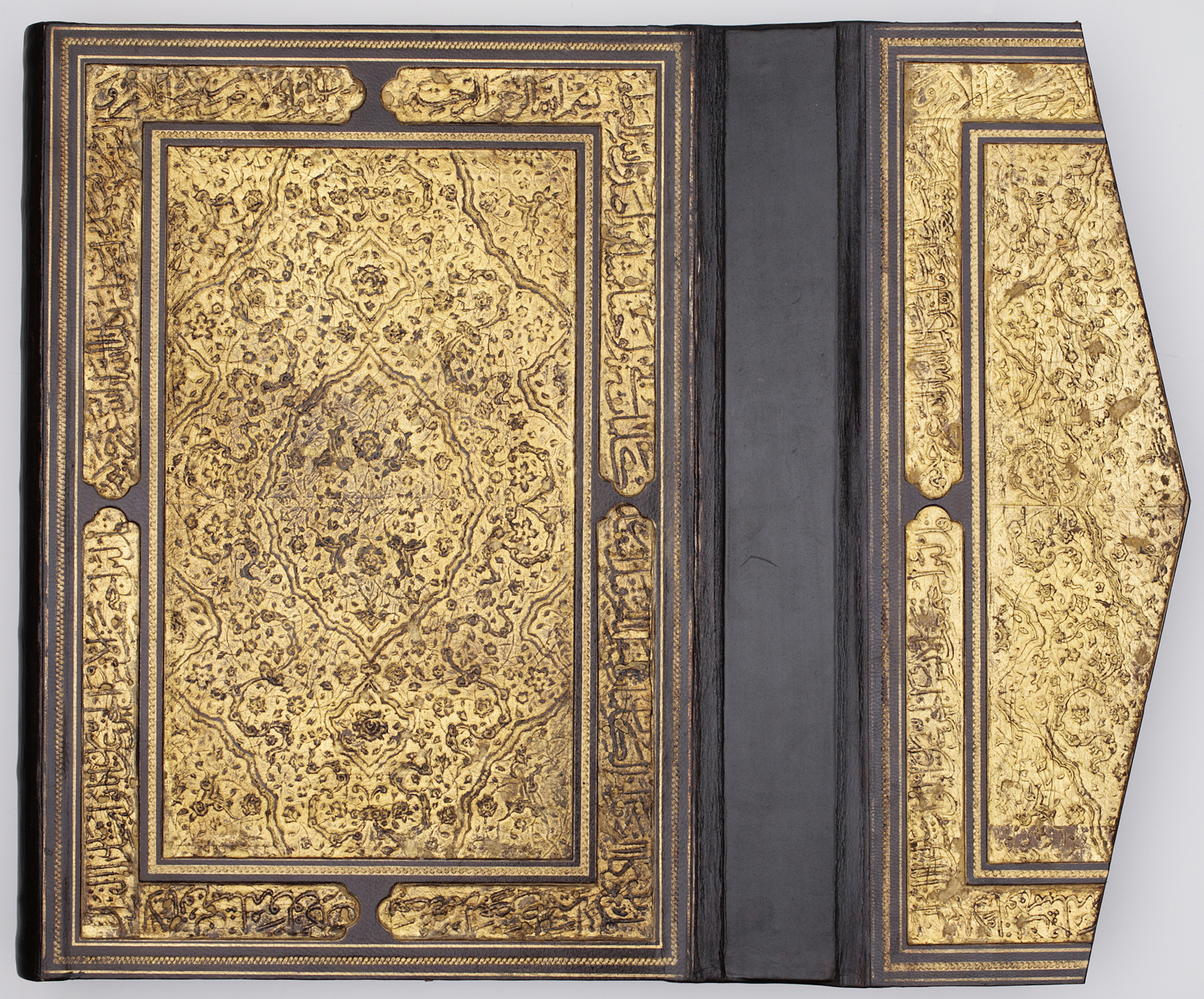 Print Page
Print Page
 Print Page
Print Page
Location: Herat, Afghanistan
Materials: ink, gold and opaque watercolour on paper; 16th-century gold-stamped leather binding and flap; doublures with gold paper filigree over coloured grounds
Dimensions: 292 folios; 33.5 x 22cm
Accession Number: QUR 642
Other Notes:
The main text was copied in the 15th or 16th century, but to it were added the illuminated pages forming folios 1b–4a. They are almost an exact copy of the illuminated opening pages of a Shahnamah made at Herat for Baysunqur in 1429–30 (now in the Gulistan Palace Library, Tehran) and could have been intended for a companion Qur’an to it. In the Baysunqur Shahnamah, the illuminated opening pages bear the names of the ancient kings of Iran and a dedication to Baysunqur. In this Qur’an, however, these have been replaced by a four-page list of surahs and two pages of text, with the surah al-Fatihah and the initial verses of surah al-Baqarah.
Script:
main text in naskh script, incidentals in thulth; 14 lines to the page
Bibliography:
D. James, After Timur. Qur’ans of the 15th and 16th Centuries, The Nasser D. Khalili Collection of Islamic Art, volume III, London 1992, cat.5, pp.28–33.
J.M. Rogers, The Arts of Islam. Masterpieces from the Khalili Collection, London 2010, cat.173, pp.148–9.




